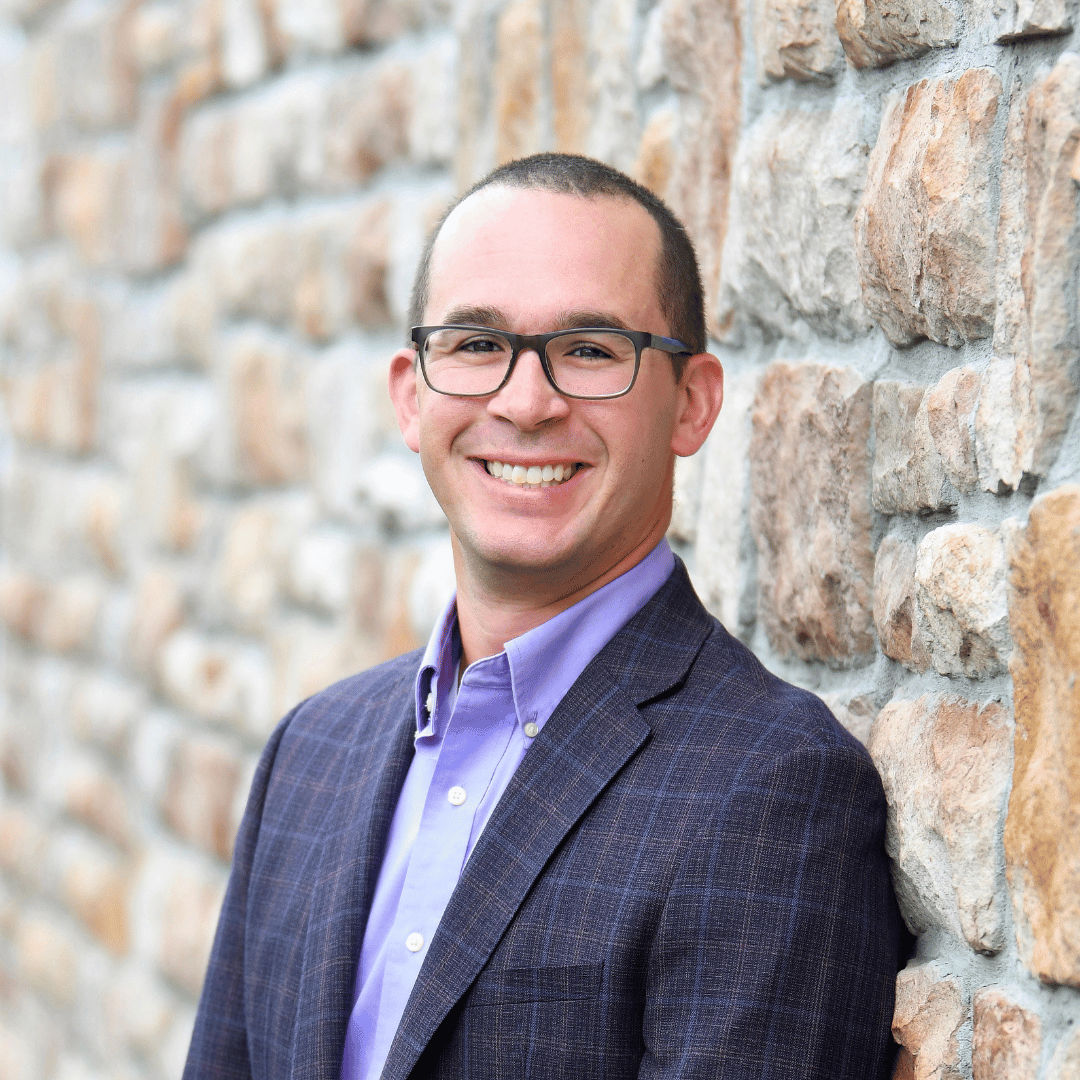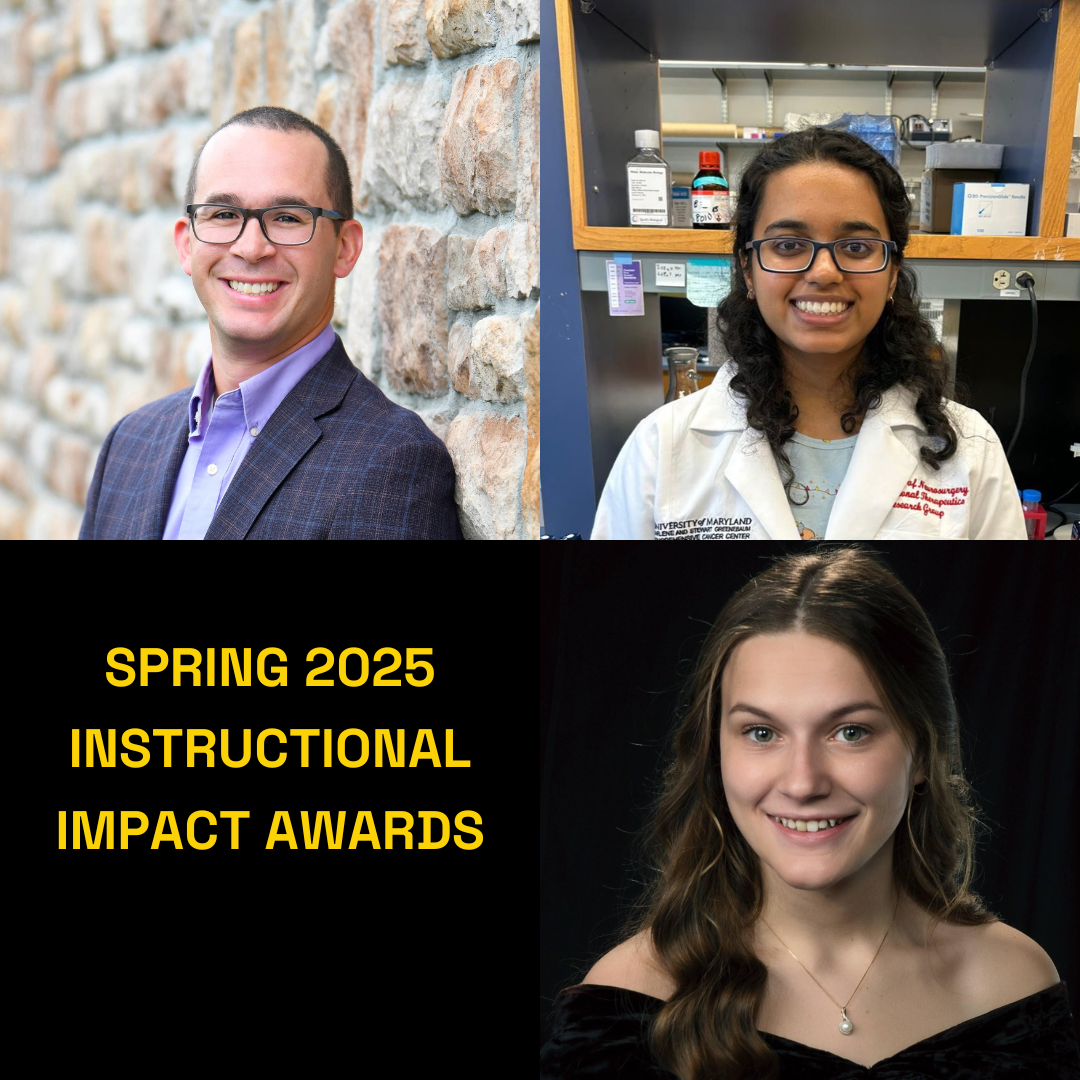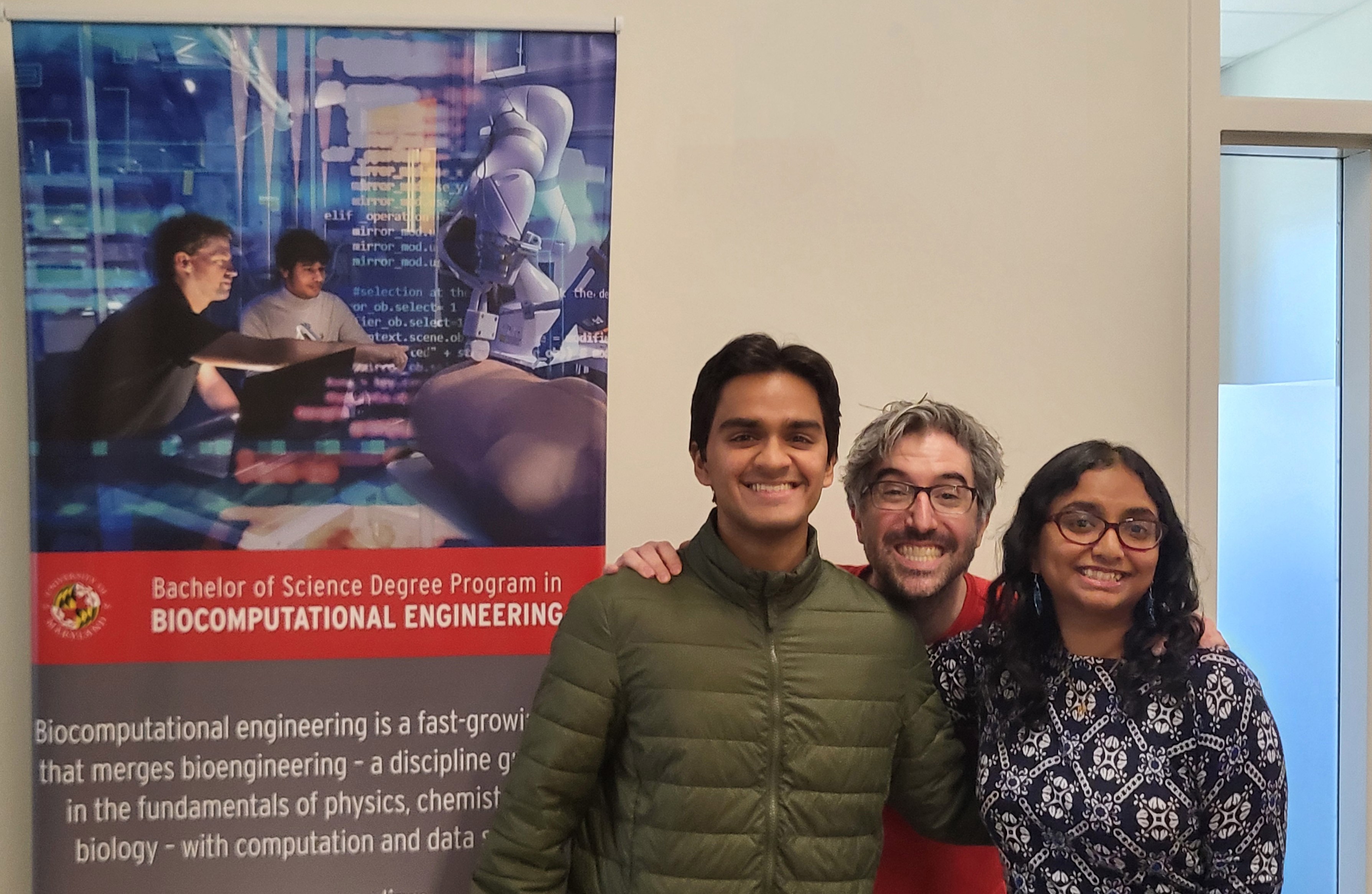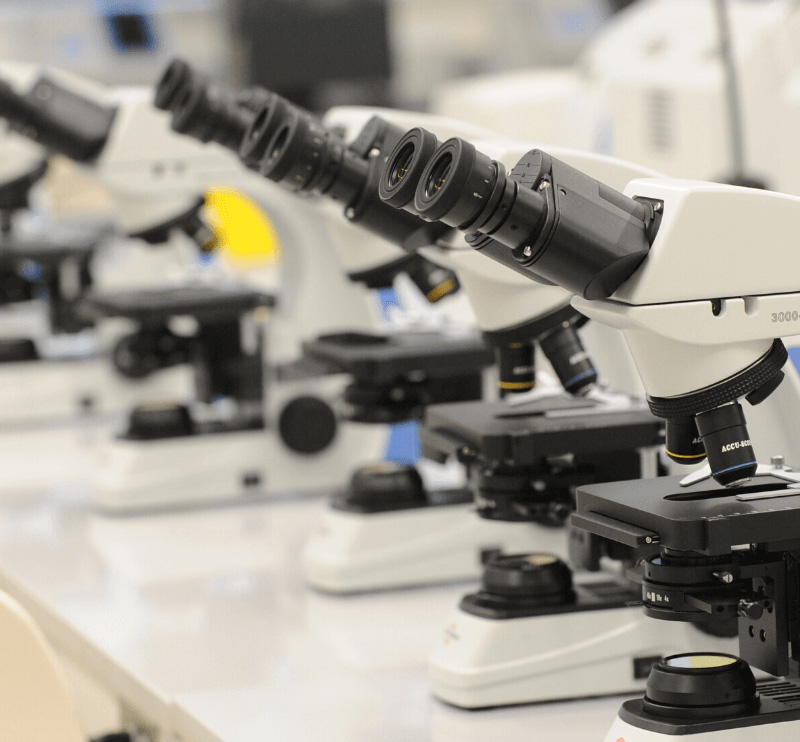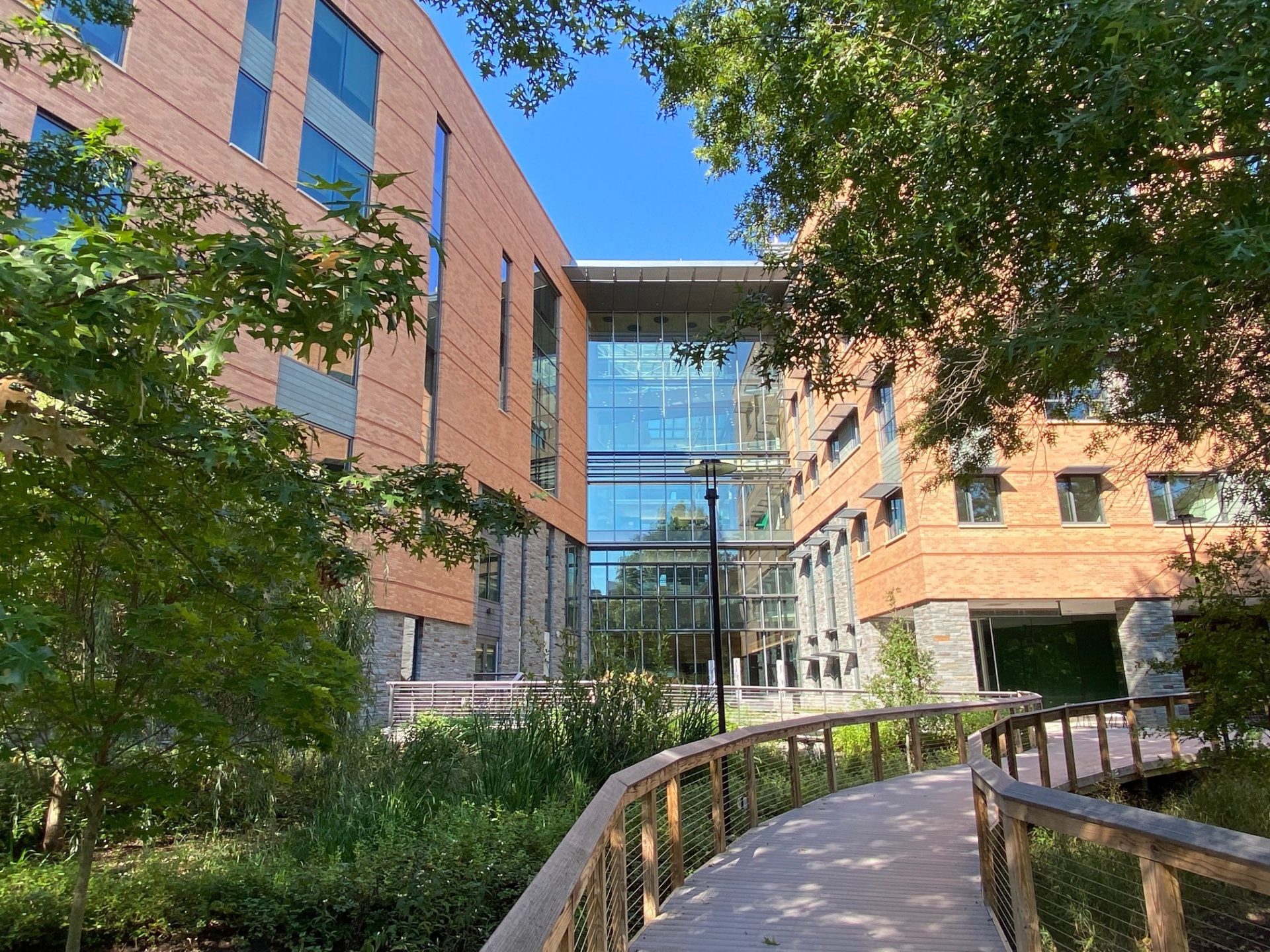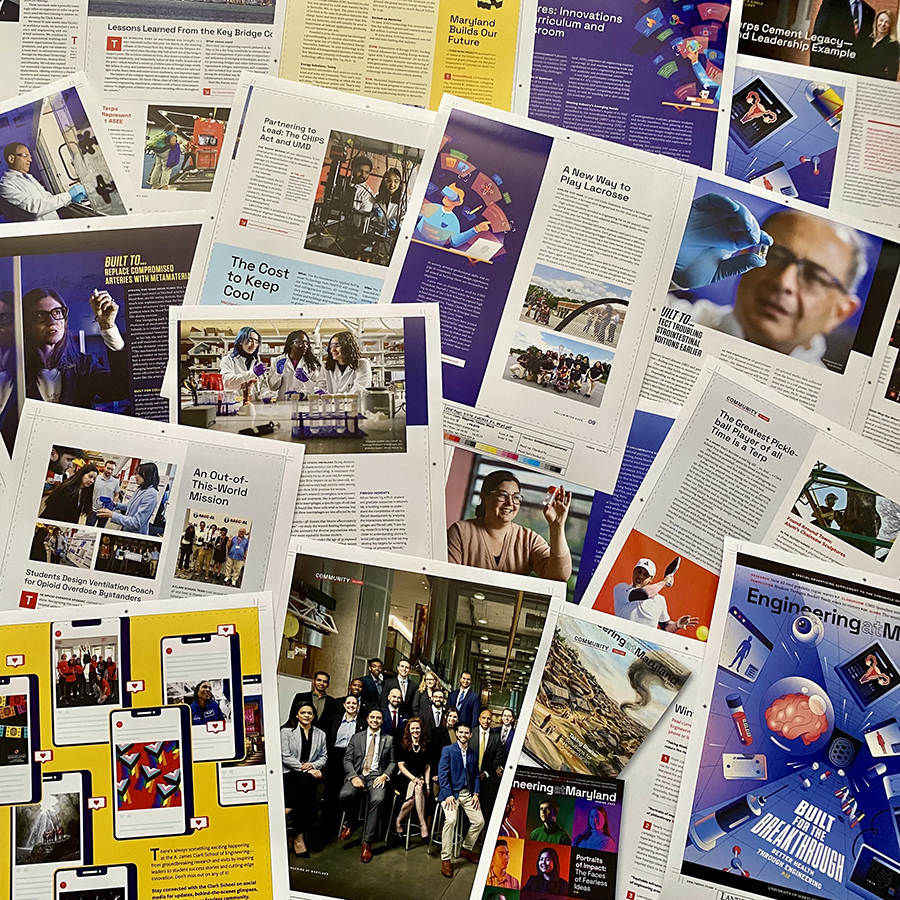BCE Seniors Earn Top 20 Spot at UMD’s 2025 Capstone Expo with AI Virus Imaging Project
June 27, 2025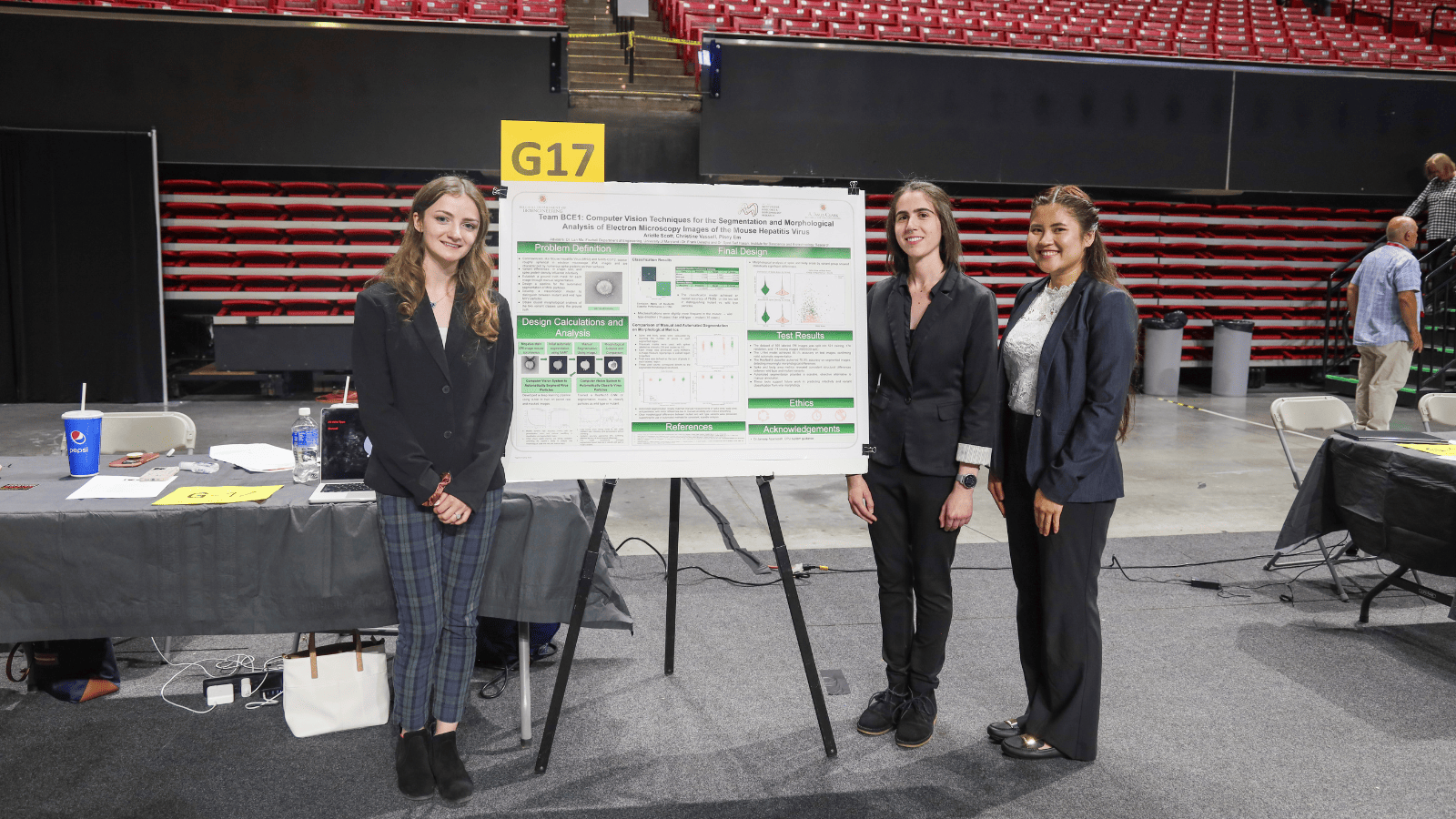
Down on the game floor of UMD’s Xfinity Center, engineering talent, not athletic ability, took center stage. The 2025 Clark School of Engineering Senior Capstone Design Expo transformed the arena into a showcase of innovation, where students presented months of dedicated work and problem-solving. Among the standout teams were Biocomputational Engineering (BCE) seniors, Arielle Scott, Christine Vassell, and Pisey Em, who earned an impressive 20th-place finish out of 132 teams.
The Expo serves as the final presentation for the Senior Capstone Design course, a required project for graduating engineering students. Dr. Lan Ma, Senior Lecturer and BCE Program Director, described the course as an opportunity for students to apply the skills they’ve developed throughout the program to solve a real-world biomedical or healthcare challenge. In the process, students also gain valuable experience in project management, collaboration, and public communication.
For their capstone project, the BCE seniors focused on analyzing electron microscope images of Mouse Hepatitis Virus, a safer research medium than similarly structured, human-transmissible COVID-19. They aimed to help scientists more efficiently distinguish between virus mutations, particularly in multivariant viruses such as COVID-19.
They built a computer vision model, a type of program that can “see” and interpret image data. By training it on nearly 900 labeled virus images, the team created a system capable of identifying different virus variants with about 80 percent accuracy, even with some visuals being heavily clustered and hard to read.
The BCE team’s work continued a line of research from previous cohorts, showing how capstone projects can evolve and contribute meaningfully over time. Their AI-powered approach offers a faster, more consistent alternative to manual virus classification, a process that often takes time and can vary between researchers. Automating the workflow could help speed up research in virology and public health.
Ma emphasized that capstone projects go beyond technical problem-solving. Students are expected to consider broader ethical, societal, and environmental impacts of their solutions, reflecting the full range of responsibilities that come with real-world engineering.
Mentors are assigned to Capstone teams to offer guidance as students apply classroom knowledge to real-world research. Dr. Syed Saif Hasan, an Assistant Professor in the Department of Biochemistry and Molecular Biology at the University of Maryland School of Medicine (UMSOM) and Institute for Bioscience & Biotechnology Research (IBBR), was one of the BCE team’s mentors. “They brought an amazing background in AI. As a biologist, I hope I was able to impart the broader applications and impact of what this research could mean to future medical studies,” He added, “I was blown away by all the students at the expo.”
In addition to developing their projects, students presented their work to a panel of judges and shared their posters with faculty, industry professionals, and visitors. Presentations were scored based on engineering education criteria and contributed to students’ final grades. Ma noted that one of the most important outcomes is that students learn to summarize complex ideas and communicate them clearly to a wide range of audiences.
As the fourth graduating class from the BCE program, Pisey, Arielle, and Christine demonstrated that innovation doesn’t depend on a program's size or age. Their success in applying computing tools to biomedical questions highlights the strength of the BCE curriculum. Through months of focused research and collaboration, they didn’t just meet a requirement—they showed they are ready to enter the future of science and engineering.
